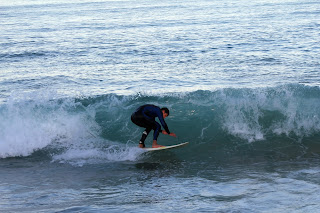Eden
After Pambula, we drove on down towards a town called Eden. Eden is a picturesque little town with only one real high street, but 2 very pretty and unspoilt bays.
Eden is famous for its whaling days. During the peak of the whaling industry, Eden was a prime spot for whalers to look out to sea and hunt the migratory Southern Right Whales and Baleen Whales as they moved up the coast during winter, or down in spring. They set up a watchtower and would hunt whales for their oil, which had many uses.
But the most famous part of this, is the absolutely unique relationship the town had with a handful of local Orcas (Killer Whales). These incredibly intelligent animals had a mutualistic relationship with the whalers, and would actively hunt the whales on behalf of them.
The killer whales of Eden, Australia ,were a group of killer whales known for their co-operation with human hunters of other whale species. They were seen near the port of Eden in southeastern Australia between 1840 and 1930. A pod of killer whales, which included a distinctive male called Old Tom, would assist whalers in hunting Baleen Whales. The killer whales would find target whales, shepherd them into Twofold Bay, and then alert the whalers to their presence and often help to kill the whales.
Old Tom's role was commonly to alert the human whalers to the presence of a baleen whale in the bay by breaching or tailslapping at the mouth of the Kiah River. Two other whales would shepherd the target whale into the bay, and two others would patrol the bay entrance to prevent it escaping. The whales inside the bay would then summon the whalers, who would rush out. After the harpooning, some of the killer whales would even grab the ropes in their teeth and aid the whalers in hauling, or even drag their whaling boats towards the target whale.
The skeleton of Old Tom is on display at the Eden Killer Whale Museum, and significant wear marks still exist on his teeth from repeatedly grabbing fast-moving ropes.In return for their help, the whalers allowed the killer whales to eat the tongue and lips of the whale before hauling it ashore, providing a rare example of mutualism between humans and killer whales. The killer whales would then also feed on the many fish and birds that would show up to pick at the smaller scraps and runoff from the fishing.
Charlotte and I visted the Killer Whale museum, and before it opened we wandered around the graveyard and found several prominent whalers buried there with their families. It was a very local place.
Charlotte at The Seahorse Inn, at Boydtown. This is a historic mansion created by Ben Boyd, an early settler and colonist. It was never really completed, and was refurbished as an inn.
The Killer Whale Museum
The skeleton of 'Old Tom'. His teeth have very large and obvious rope friction marks, showing where he used to tow boats and stranded whales using the ropes.
I also got a chance to try out my wetsuit for the first time!
'Tucking under!'









No comments:
Post a Comment
Please keep comments helpful, clean, and relevant!